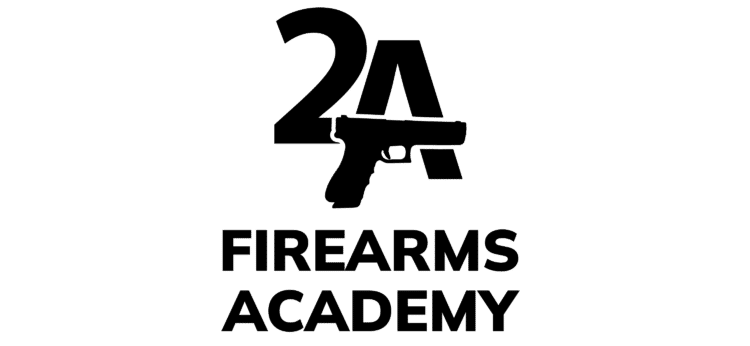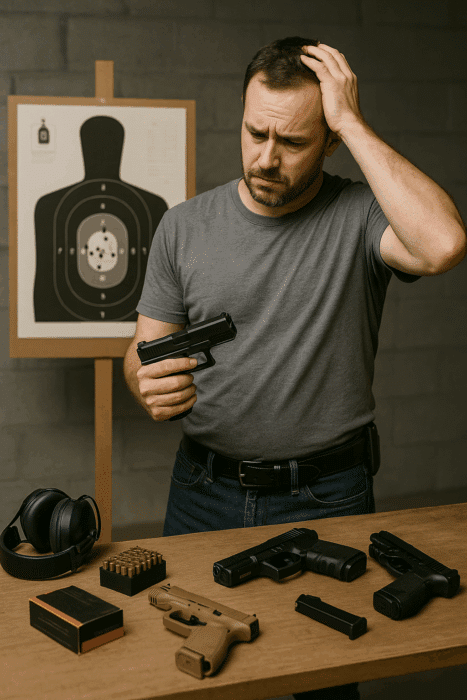Mistakes Gun Owners Make — And How to Avoid Them
If you carry a firearm for personal protection, your training and decisions matter more than your gear. Many well-meaning gun owners make avoidable mistakes—often without realizing the risk they’re creating for themselves or others.
In this article, we’ll break down the most typical mistakes gun owners make, explain why they’re dangerous, and show you how to correct them. Whether you’re a new CCW permit holder or a seasoned shooter, these insights will help you become more skilled, more responsible, and better prepared.
Training for Possibilities Instead of Probabilities
Many shooters spend time and money preparing for low-probability events, like taking a precision headshot at 50 yards. But over 90% of defensive gun uses happen within 10 yards, with many occurring at 3–7 yards.
What’s the risk?
- You focus your gear and training on fantasy scenarios.
- You neglect the close-range, high-speed threats you’re most likely to face.
What to do instead:
- Train with the gun you actually carry.
- Prioritize draw speed, target acquisition, and close-quarters accuracy.
- Keep your setup simple and practical.
Only Practicing What You’re Already Good At
It feels good to shoot well. That’s why many people repeat the same drills—never pushing their limits.
Common signs of this mistake:
- You never shoot one-handed.
- You avoid malfunction clearing.
- You always shoot from a static position.
Why it matters:
Real self-defense shootings are messy and dynamic. Weak-hand use, cover, movement, and imperfect grip are all possible. You must train for your weaknesses—not just your strengths.
Fix it:
- Include weak-side and support-hand drills.
- Practice reloads and malfunction clearances.
- Shoot from kneeling, prone, and behind cover.
Neglecting the Draw and Grip
You can’t shoot well if you don’t start with a proper grip—and you won’t get that without a clean draw. Yet many concealed carriers never practice drawing under stress.
The risk:
- Poor grip = poor recoil control and missed shots.
- Slow, fumbling draws = wasted seconds you can’t afford.
How to improve:
- Use a sturdy gun belt and a purpose-built holster.
- Practice dry-fire draw drills daily (with an unloaded firearm).
- Learn the “crush grip” technique—firm, even pressure from both hands.
Trying to Buy Skill Instead of Building It
A better gun or new optic won’t fix bad fundamentals. Some shooters bounce from one platform to another, chasing a magic solution that doesn’t exist.
The trap:
- Constantly upgrading your gear without mastering the basics.
- Believing hardware will replace hard work.
The fix:
- Choose one reliable firearm for carry and training.
- Stick with it. Train with it. Master it.
- Spend your money on ammo and range time, not unnecessary accessories.
Prioritizing Speed Over Accuracy
Speed looks cool on video—but misses don’t stop threats. In a defensive shooting, accuracy matters most.
What this mistake looks like:
- Fast split times with poor hits.
- Rushed shots during drills.
- Prioritizing timer results over consistent center-mass hits.
Correction:
- Train accuracy first, then add speed gradually.
- Focus on hits under time pressure—not just fast shooting.
- Remember: you can’t miss fast enough to win.
Over-Tuning Firearms Until They Malfunction
Many shooters modify their guns for performance—then unknowingly sacrifice reliability. A defensive handgun must fire every time. No exceptions.
Red flags:
- Lightened recoil or striker springs.
- Aftermarket parts causing feeding issues.
- Guns that run fine clean, but jam under stress or dirt.
Solution:
- Keep your carry gun close to stock.
- Test any modifications with real carry ammo and one-handed drills.
- Prioritize function over flash. A defensive gun isn’t a race car—it’s a life-saving tool.
Carrying a Gun as a Lucky Charm Without Training
Some people carry small “pocket rockets” or micro-compacts but never train with them. They assume that if danger comes, they’ll “rise to the occasion.” That’s a myth.
The truth:
You will default to the level of your training—not your intentions.
The issue:
- Small guns are harder to shoot accurately.
- Without training, your CCW is just a paperweight.
- A gun you don’t train with is a liability—not protection.
What to do:
- Carry the largest gun you can shoot well and comfortably conceal.
- Practice with it often—both live fire and dry fire.
- Don’t just carry a gun—train like your life depends on it. Because it might.
Final Thoughts: Skill Wins, Gear Doesn’t
Every responsible gun owner has fallen into one of these traps at some point. What separates good shooters from unsafe ones is awareness and accountability.
If you carry concealed or own a gun for protection:
- Train for what’s likely.
- Practice what’s hard.
- Keep your gear simple and reliable.
- Always put accuracy before speed.
Because when everything goes wrong, your preparation is what determines the outcome—not your gun’s price tag.

